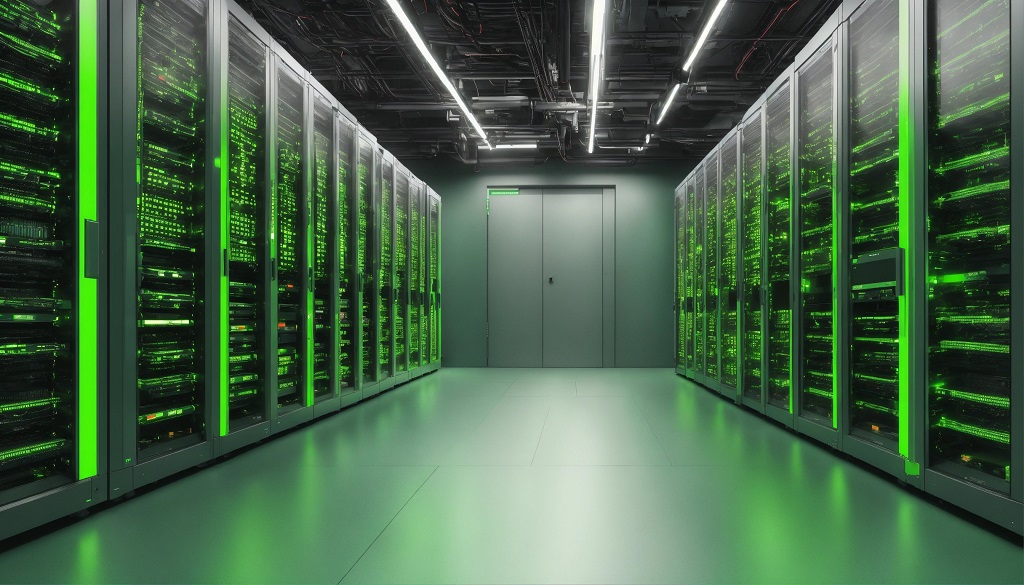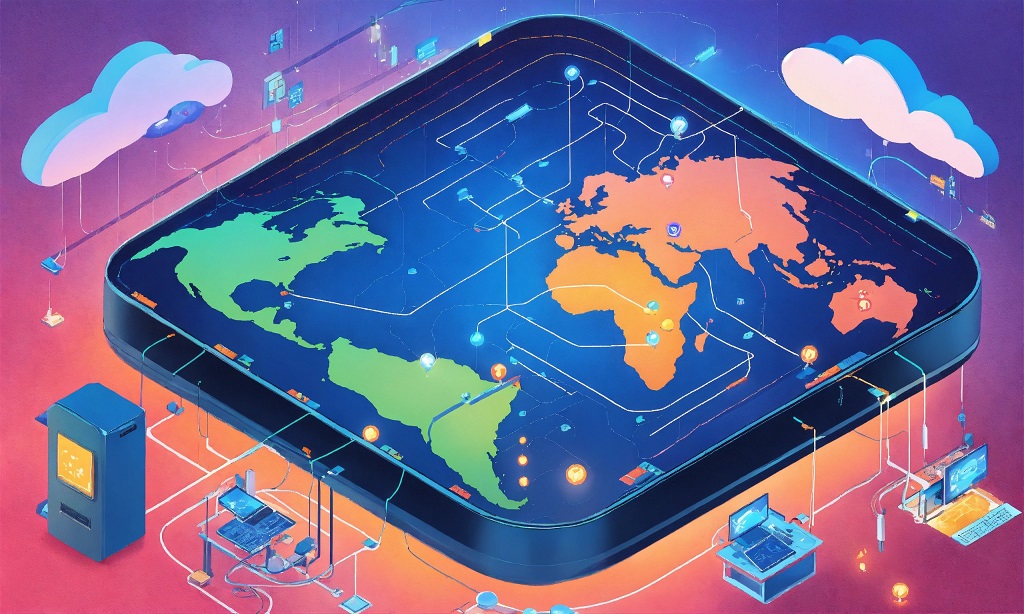- trending-title
- What Is Blockchain Technology and How Does It Work?
- 7011214217
To comprehend the future, we must first grasp the present. Cloud computing, in its current form, has revolutionized how organizations leverage computing resources. The widespread adoption of Infrastructure as a Service (IaaS), Platform as a Service (PaaS), and Software as a Service (SaaS) has fueled unprecedented flexibility, scalability, and cost-efficiency.
In the future, we anticipate a seismic shift towards edge computing. As the Internet of Things (IoT) burgeons, edge computing brings processing power closer to the data source. This decentralized approach reduces latency, enhances real-time processing, and minimizes bandwidth usage. Cloud providers will likely invest heavily in edge infrastructure to cater to the demands of a hyper-connected world.
Artificial Intelligence (AI) and Machine Learning (ML) are poised to be the driving forces behind cloud computing advancements. Cloud platforms will evolve to seamlessly integrate AI and ML services, enabling businesses to derive deeper insights from data, automate complex tasks, and enhance overall decision-making processes.
While still in its infancy, quantum computing holds immense promise for the future of cloud computing. Quantum computers, with their unparalleled processing capabilities, could revolutionize tasks that are currently deemed computationally infeasible. Cloud providers are likely to embark on quantum computing ventures, opening new frontiers for scientific research, cryptography, and problem-solving.
Serverless computing, often dubbed as Function as a Service (FaaS), is expected to mature and become a staple in cloud architectures. The appeal of serverless lies in its event-driven model, where computing resources are automatically provisioned and scaled based on demand. This paradigm shift offers cost savings, enhanced developer productivity, and efficient resource utilization.
As blockchain technology gains prominence, cloud computing is poised to integrate seamlessly with distributed ledger systems. This convergence could revolutionize data security, transparency, and trust in various industries. Cloud providers are likely to offer Blockchain as a Service (BaaS), simplifying the development and deployment of blockchain applications.
Hybrid and multi-cloud architectures will continue to evolve, offering organizations the flexibility to distribute workloads strategically. The future sees a seamless integration of on-premises infrastructure, private clouds, and multiple public clouds. This approach mitigates risks, enhances data redundancy, and optimizes performance based on specific business needs.
With the proliferation of cyber threats, the future of cloud computing demands heightened security measures. Cloud providers will invest heavily in advanced encryption, zero-trust security models, and AI-driven threat detection. Privacy and compliance will be at the forefront, ensuring that data remains secure and organizations adhere to global regulations.
The realm of cloud technology is dynamic, and staying ahead requires a keen eye on emerging trends and predictions. As we navigate through the current landscape, let's explore the anticipated trends that will shape the future of cloud technology.
Edge computing is poised to dominate the cloud technology landscape. As the Internet of Things (IoT) burgeons and demands real-time data processing, edge computing brings computation closer to the data source. In the coming years, we foresee a pervasive integration of edge computing into cloud architectures, reducing latency, enhancing performance, and catering to the requirements of a hyper-connected world.
Artificial Intelligence (AI) and Machine Learning (ML) are no longer peripheral to cloud technology; they are its driving force. Cloud platforms will evolve to seamlessly integrate AI and ML services, empowering businesses to extract deeper insights, automate tasks, and enhance decision-making processes. The future sees cloud technology as the epicenter for AI and ML advancements, democratizing access to these transformative technologies.
Quantum computing, though in its infancy, holds immense promise. Cloud providers are expected to embark on quantum computing ventures, unlocking unparalleled processing capabilities. The future sees quantum computing playing a pivotal role in solving computationally infeasible problems, revolutionizing fields such as cryptography, optimization, and scientific research.
Serverless computing, or Function as a Service (FaaS), is set to mature and become a standard in cloud architectures. The event-driven model of serverless computing, where resources are provisioned and scaled automatically based on demand, offers cost savings and increased developer productivity. In the future, serverless computing is poised to be a fundamental component of cloud technology, driving efficiency and resource optimization.
Blockchain technology is gaining prominence, and its integration with cloud technology is inevitable. Cloud providers are likely to offer Blockchain as a Service (BaaS), simplifying the development and deployment of blockchain applications. This convergence is anticipated to revolutionize data security, transparency, and trust, particularly in industries such as finance, healthcare, and supply chain.
Hybrid and multi-cloud architectures are expected to evolve further, becoming the norm for organizations. The future sees a seamless integration of on-premises infrastructure, private clouds, and multiple public clouds. This approach offers flexibility, mitigates risks, enhances data redundancy, and optimizes performance based on specific business needs.
In an era of escalating cyber threats, advanced security measures will be at the forefront of cloud technology. Cloud providers will invest heavily in advanced encryption, zero-trust security models, and AI-driven threat detection. Privacy and compliance will be paramount, ensuring that data remains secure, and organizations adhere to global regulations.
In conclusion, the world of cloud technology is not only evolving but rapidly expanding, bringing forth a myriad of opportunities and innovations. From the foundational services of Infrastructure as a Service (IaaS), Platform as a Service (PaaS), and Software as a Service (SaaS) to cutting-edge trends like edge computing, AI integration, and quantum computing, the landscape is dynamic and transformative.
As businesses continue to embrace cloud technology, the benefits of flexibility, scalability, and cost-efficiency become increasingly apparent. The future holds the promise of even greater advancements, with emerging technologies reshaping how we process, analyze, and derive value from data.
Security remains a paramount concern, and the collaborative efforts of cloud service providers and users are crucial in establishing robust security postures. The shared responsibility model underscores the importance of a collective approach to safeguarding data and applications in the cloud.
In navigating this ever-changing terrain, businesses that remain agile, adaptive, and forward-thinking will position themselves at the forefront of digital transformation. The cloud technology trends and predictions paint a picture of an ecosystem that invites exploration and innovation, promising a future where the possibilities of cloud technology are limited only by imagination.
In essence, the journey into the cloud is not just a technological evolution; it is a strategic imperative that defines the trajectory of businesses in the digital era. As we look to the future, the cloud beckons with boundless potential, inviting organizations to chart new territories, optimize operations, and unlock unprecedented possibilities.

In the dynamic landscape of information technology, networking...
View Details
To comprehend the future, we must first grasp the present....
View Details

Cloud computing architecture serves as the blueprint for the...
View Details
In the dynamic landscape of cloud computing, the choice of...
View Details
In the ever-evolving realm of technology, cloud services have...
View Details